Between the delicious delights of a cured and smoked ham and the more obscure delicacy of trotter gear, the rear limb is an essential piece of pork to understand.
I’m cooking and eating an entire pig–and along this journey I hope to teach you how to make use of the whole hog from snout to tail–but even the occasional pork-eater can benefit from knowing where their pork comes from.
In the last article, I broke down a front limb primal into its small sub-primal cuts and laid out the game plan of how I plan to cook it all up.
As you’d imagine, the rear limb is similar in many ways, but unique enough to merit its own mini-guide.
And first of all I’d like to demystify one of the most prized pork dishes of them all…
Ham
When most of us hear “ham,” we think only of the final product–a large hunk of pork that has been cured and smoked to a pink and delicious little piece of heaven.
But in the strictest sense, ham refers merely to the cut of meat that surrounds the upper rear leg of the hog.
This is the quintessential roast, and is a traditional meal for holidays such as Easter. On top of that, the ginormous bone found within will make your dog think you are the greatest thing ever.
Trust me.
Yes, you can cut up raw ham into steaks and roasts, but I’d be crazy if I didn’t do the traditional method of wet-curing for several weeks followed by slow smoking for these bad boys.
(You can also dry-cure hams to make such delicacies as prosciutto, but it requires months in a strictly temperature- and humidity-controlled room. No thanks.)
It’s very unlikely that you’ll ever find a raw ham at the supermarket. They are generally sold pre-cured (and junked-up with a whole bunch of nasty-ass ingredients), so if you really want a great ham for a big feast, you’ll want to get one from a local farmer and follow along with my traditional method of preparation.
Hock, Trotter, Skin, and Fat
Just like the front limb, the rear limb primal contains a hock, a trotter, and plenty of skin and fat.
The rear hock is larger than the front hock, but apart from that, these parts are interchangeable with their analogous cuts up front. I’ll be using them the same way that I’ll be using the parts from the front limb.
In particular, the skin and fat in this part doesn’t get a lot of praise, so it’s probably best to use this for some simple pork rinds and schmaltz for cooking fat.
The Tail
The one “bonus part” you get off the rear limb that has no analog on the front limb is the tail.
While you can gather a bunch of them together to make crispy tails, the effort hardly seems worth it if you just have one.
So I’ll be tossing this in along with the head and trotters to make headcheese.
Notes On Butchering
Like the front limb, this is a straightforward cut to break down into sub-primal cuts, but in this case even easier.
The front limb requires separation between the shoulder blade and upper limb bone to form the butt and picnic cuts, but the upper limb requires no additional separation. You just get one big ol’ ham.
Separating the hock and trotter are straightforward as well, and require only separating the bones and meat at the “knee” and “ankle” of the cut.
The only new skill is butchering the tail and removing the hip bone. Just slice through the tail with a knife and remove the hip easily from the ham.
Again, I had my butcher cut through the bone with a saw and I just cut through the flesh. Either ask your butcher to do the same, or get ready to break out the saw.
While the front and rear limb primals are pretty easy to break down, the midsection is a whole ’nother story.
In the next article in the Whole Hog Project series, I’ll show you how you can break down that intimidating cut of meat on your own, minimize risk of losing a finger (or worse), and show you where that most sacred of meats–bacon–comes from.
Stay tuned!
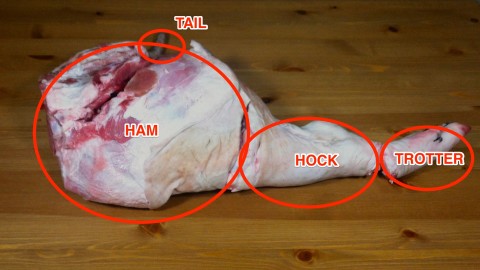
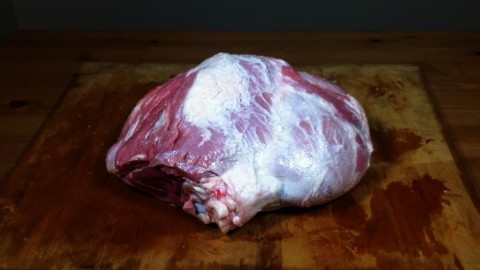
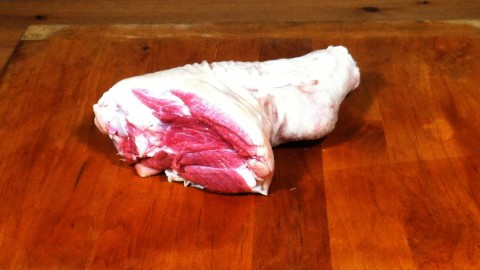
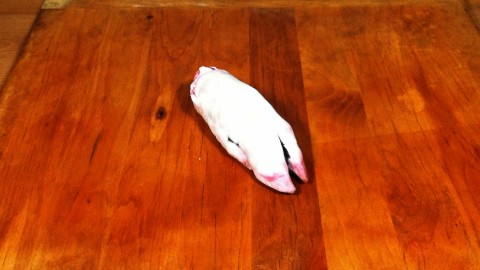
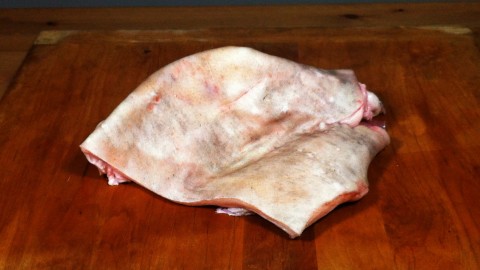
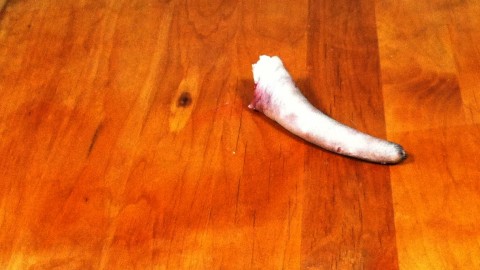
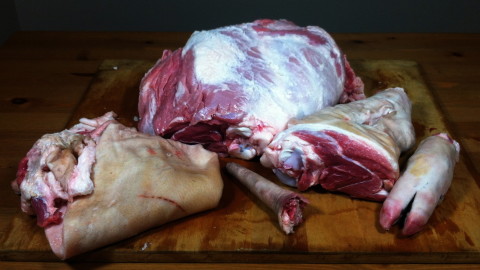
 I'm a science geek, food lover, and wannabe surfer.
I'm a science geek, food lover, and wannabe surfer.
Comments on this entry are closed.